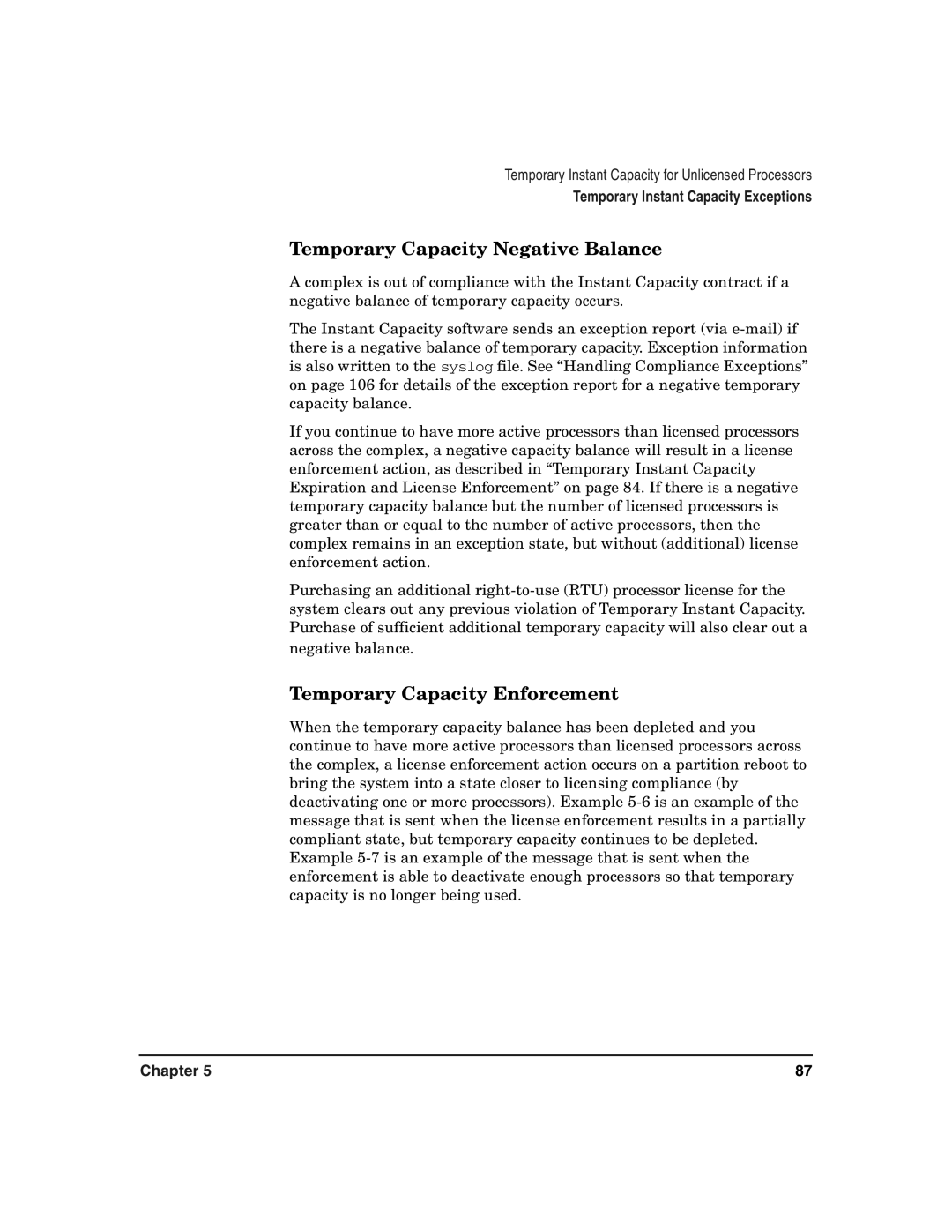Temporary Instant Capacity for Unlicensed Processors
Temporary Instant Capacity Exceptions
Temporary Capacity Negative Balance
A complex is out of compliance with the Instant Capacity contract if a negative balance of temporary capacity occurs.
The Instant Capacity software sends an exception report (via
If you continue to have more active processors than licensed processors across the complex, a negative capacity balance will result in a license enforcement action, as described in “Temporary Instant Capacity Expiration and License Enforcement” on page 84. If there is a negative temporary capacity balance but the number of licensed processors is greater than or equal to the number of active processors, then the complex remains in an exception state, but without (additional) license enforcement action.
Purchasing an additional
Temporary Capacity Enforcement
When the temporary capacity balance has been depleted and you continue to have more active processors than licensed processors across the complex, a license enforcement action occurs on a partition reboot to bring the system into a state closer to licensing compliance (by deactivating one or more processors). Example
Chapter 5 | 87 |
